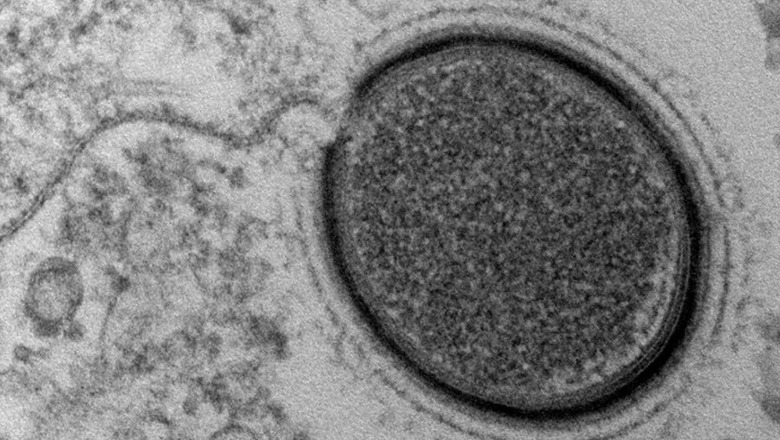'Zombie' Viruses Frozen in Arctic Permafrost Could Be Freed as World Warms, Trigger Deadly Pandemics

views
Viruses frozen in Arctic permafrost could be free as temperatures rise across the world and could pose fresh challenges for humanity by causing a new disease outbreak and possibly pandemics, scientists warned.
Methuselah microbes (or zombie viruses as they are also known) were previously isolated by researchers. They fear that these viruses could trigger a new global medical emergency. They can trigger illnesses and diseases from the distant past.
Scientists are working to set up a new monitoring network which would to the finest degree possible identify early cases of a disease caused by ancient microorganisms. It will also provide quarantine and expert medical treatment for infected people in a bid to contain an outbreak. It will also prevent people from leaving the region.
Geneticist Jean-Michel Claverie of Aix-Marseille University said that adequate attention should be given to outbreaks “that might emerge in the far north and then travel south”. “There are viruses up there that have the potential to infect humans and start a new disease outbreak,” Claverie was quoted as saying by the The Guardian.
She said that current focus is on diseases that might emerge in southern regions and then spread north. “We don’t know what viruses are lying out there in the permafrost but I think there is a real risk that there might be one capable of triggering a disease outbreak – say of an ancient form of polio. We have to assume that something like this could happen,” virologist Marion Koopmans of the Erasmus Medical Center in Rotterdam also told the UK-based newspaper, backing Claverie.
Claverie in 2014 along with other researchers isolated live viruses in Siberia and showed they could still infect single-cell organisms. She showed that even though they were buried in permafrost for thousands of years they were still able to infect.
Research conducted in 2023 showed there were several different viral strains from seven different sites in Siberia who could infect cultured cells and one virus sample was 48,500 years old.
“The viruses we isolated were only able to infect amoebae and posed no risk to humans. However, that does not mean that other viruses – currently frozen in the permafrost – might not be able to trigger illnesses in humans. We have identified genomic traces of poxviruses and herpesviruses, which are well known human pathogens, for example,” Claverie told the Guardian.
What Is Permafrost
Permafrost covers a fifth of the northern hemisphere. The soil kept temperatures below 0°C for tens of thousands of years there is known as permafrost. “The crucial point about permafrost is that it is cold, dark and lacks oxygen, which is perfect for preserving biological material. You could put a yoghurt in permafrost and it might still be edible 50,000 years later,” Claverie further added.
Scientists also believe that permafrost could contain viruses that are up to a million years old and could be older than the human species which emerged about 300,000 years ago. “Our immune systems may have never been in contact with some of those microbes, and that is another worry,” Claverie told the newspaper.
As climate change grips the planet, the world’s permafrost is changing and reserves in Canada, Siberia and Alaska are melting because those areas are heating up several times faster than the average rate of increase in global warming.
Researchers have also flagged the disappearance of Arctic sea ice as a major risk because disappearing ice will lead to new shipping lanes, increased water traffic and industrial development in Siberia. This will risk the lives of people working there, for example, the miners who are currently working in mining projects in Siberia.
Koopmans pointed to change in land use and its connection to Nipah and monkeypox outbreaks. “If you look at the history of epidemic outbreaks, one of the key drivers has been change in land use. The Nipah virus was spread by fruit bats who were driven from their habitats by humans. Similarly, monkeypox has been linked to the spread of urbanisation in Africa. And that is what we are about to witness in the Arctic: a complete change in land use, and that could be dangerous, as we have seen elsewhere,” Koopmans was quoted as saying.
Several scientists are now working with UArctic, the University of the Arctic – an international educational network in the polar region – to prepare from the threats that could emerge if these viruses are set free.
















Comments
0 comment